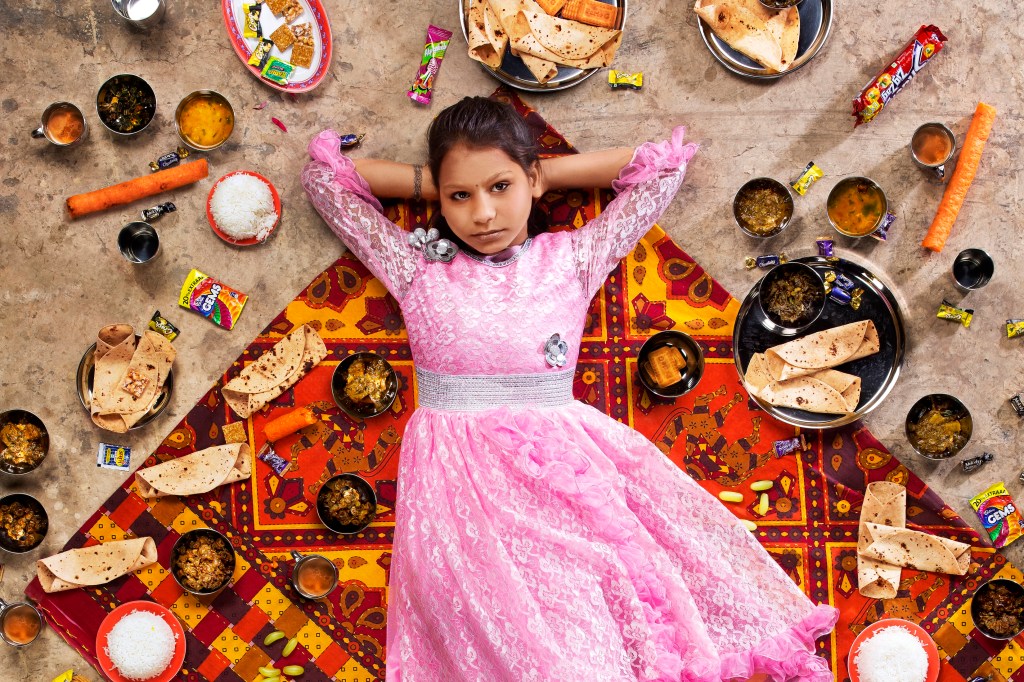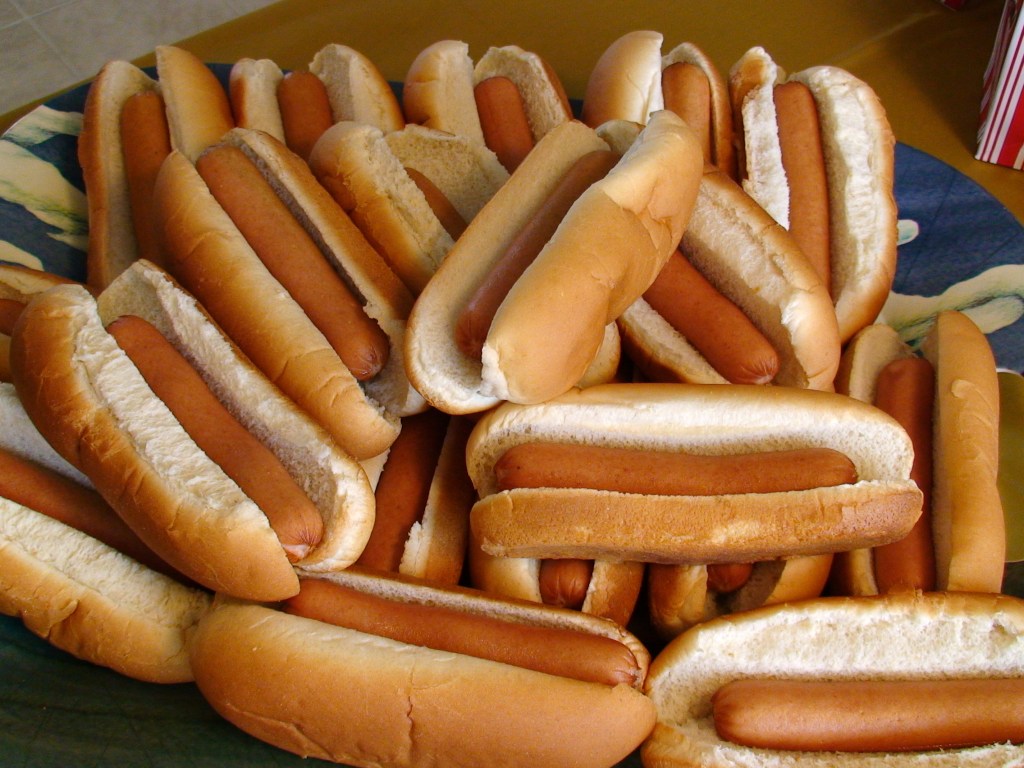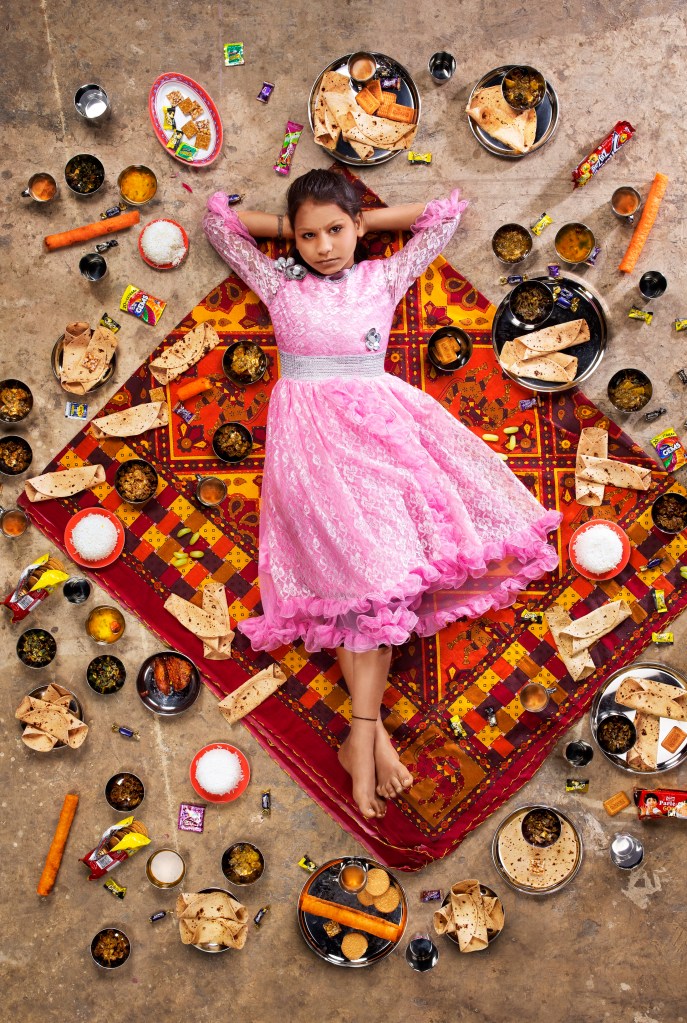Food for Thought

Photographer Gregg Segal went around the world asking kids what they eat in a week. Then he photographed them with the food. Here, he shares his story.
In a small hut outside Mumbai, India, Anchal Sahni sits down to dinner with her family. They eat potatoes simmered in curry, flatbread, and lentils. Anchal has a healthier diet than many kids in India who can afford to eat out. In Mumbai, a medium Domino’s pizza costs $13. That is about three times the amount of money Anchal’s dad earns in a day.
Fast-food companies are investing heavily in foreign countries. In these places, a Big Mac isn’t seen as junk. It’s seen as a status symbol.
In 2015, Cambridge University identified the countries with the healthiest diets. Nine of the top 10 are in Africa. In these countries, most meals are homemade. In the U.S., nearly 60% of the calories we consume
consume
 CVELTRI/GETTY IMAGES
to eat, drink, or use up
(verb)
Top contestants in the hot-dog eating competition can consume more than 70 hot dogs in 10 minutes.
come from ultra-processed foods.
CVELTRI/GETTY IMAGES
to eat, drink, or use up
(verb)
Top contestants in the hot-dog eating competition can consume more than 70 hot dogs in 10 minutes.
come from ultra-processed foods.
A Trip Around the World
For two years, I’ve traveled the world. I ask kids to keep a journal of everything they eat in a week. Once the week is up, I make a portrait
portrait
 CHRISTINLOLA/GETTY IMAGES
a picture, drawing, or photograph of someone
(noun)
On picture day, a photographer comes to my school and makes portraits of all the students and teachers.
of the child with the food arranged around him or her. I’m focusing on kids because eating habits form when we’re young. These habits often pave the way to chronic health problems.
CHRISTINLOLA/GETTY IMAGES
a picture, drawing, or photograph of someone
(noun)
On picture day, a photographer comes to my school and makes portraits of all the students and teachers.
of the child with the food arranged around him or her. I’m focusing on kids because eating habits form when we’re young. These habits often pave the way to chronic health problems.

Anchal Sahni, 10, Mumbai, India
GREGG SEGALObesity rates are soaring. Forty years ago, one out of 40 kids was obese. Today, 10 in 40 are. I am encouraged to find communities in which home-cooked meals have not been replaced by junk. When the hand that stirs the pot is Mom or Dad, Grandma or Grandpa, kids are healthier.
Now I am working on a book called Daily Bread. It will highlight a growing, grassroots
grassroot
 HERO IMAGES/GETTY IMAGES
operating at the most basic level of society
(adjective)
The grassroots movement has already helped more than 700 people register to vote.
community and its healthier approach to diet. The book’s deeper goal is to inspire change.
HERO IMAGES/GETTY IMAGES
operating at the most basic level of society
(adjective)
The grassroots movement has already helped more than 700 people register to vote.
community and its healthier approach to diet. The book’s deeper goal is to inspire change.
The Challenge
Segal created this challenge for TFK readers.
One quick way to judge if you are eating a balanced diet is to note how many natural colors are in your food. Generally, white foods don’t have a lot of nutritional value. But foods with intense colors do—think of purple beets, red peppers, green broccoli, orange carrots, yellow squash, and blue blueberries.
For one week, keep a journal of everything you eat. If possible, photograph your meals. Make notes about what you like about each dish. What’s in it that’s good for you? How many colors are in the food? How many of these colors are natural and how many are artificial?
You can also track how many of your foods are whole and how many are processed. How many come straight from the garden (or farm)? How many come from a box or package?
For the packaged foods, how many ingredients are there? Here’s a general rule of thumb for healthy eating: Avoid products with more than five ingredients—and especially avoid ingredients you can’t pronounce.
Assessment: Click here for a printable quiz. Teacher subscribers can find the answer key in this week's Teacher's Guide.













